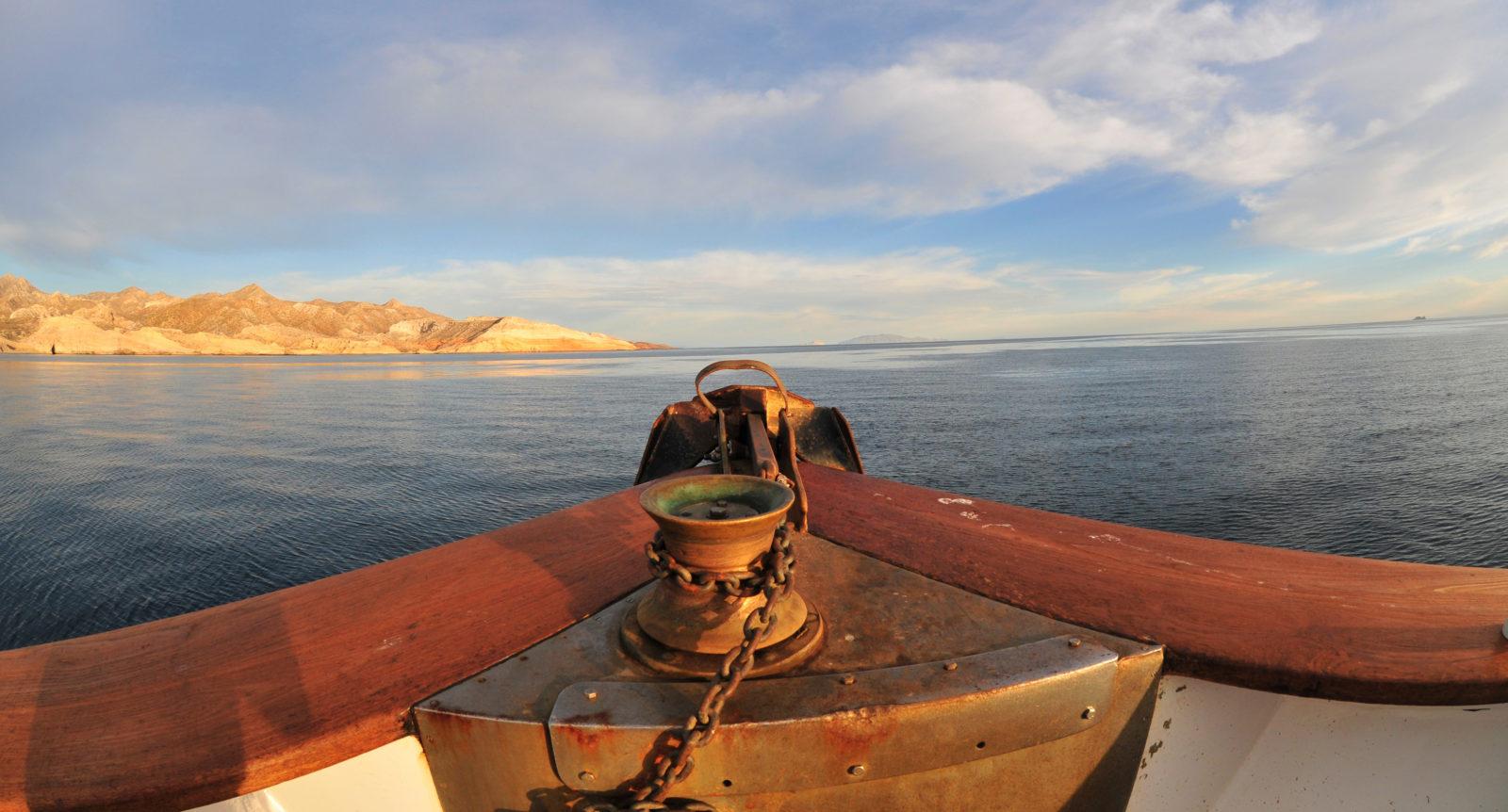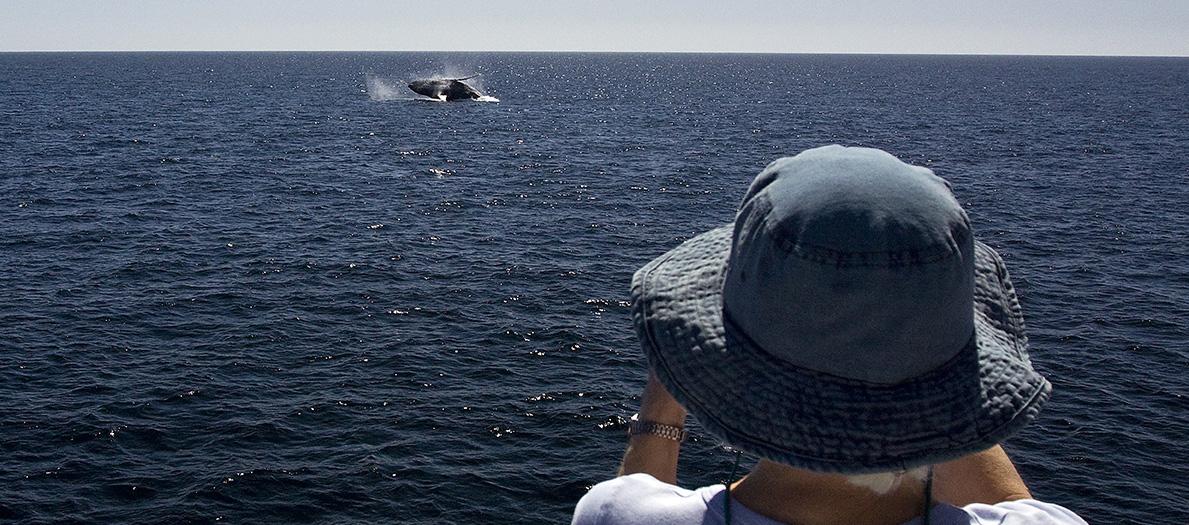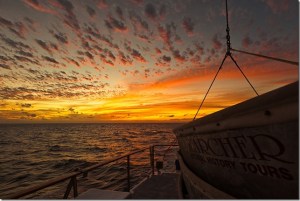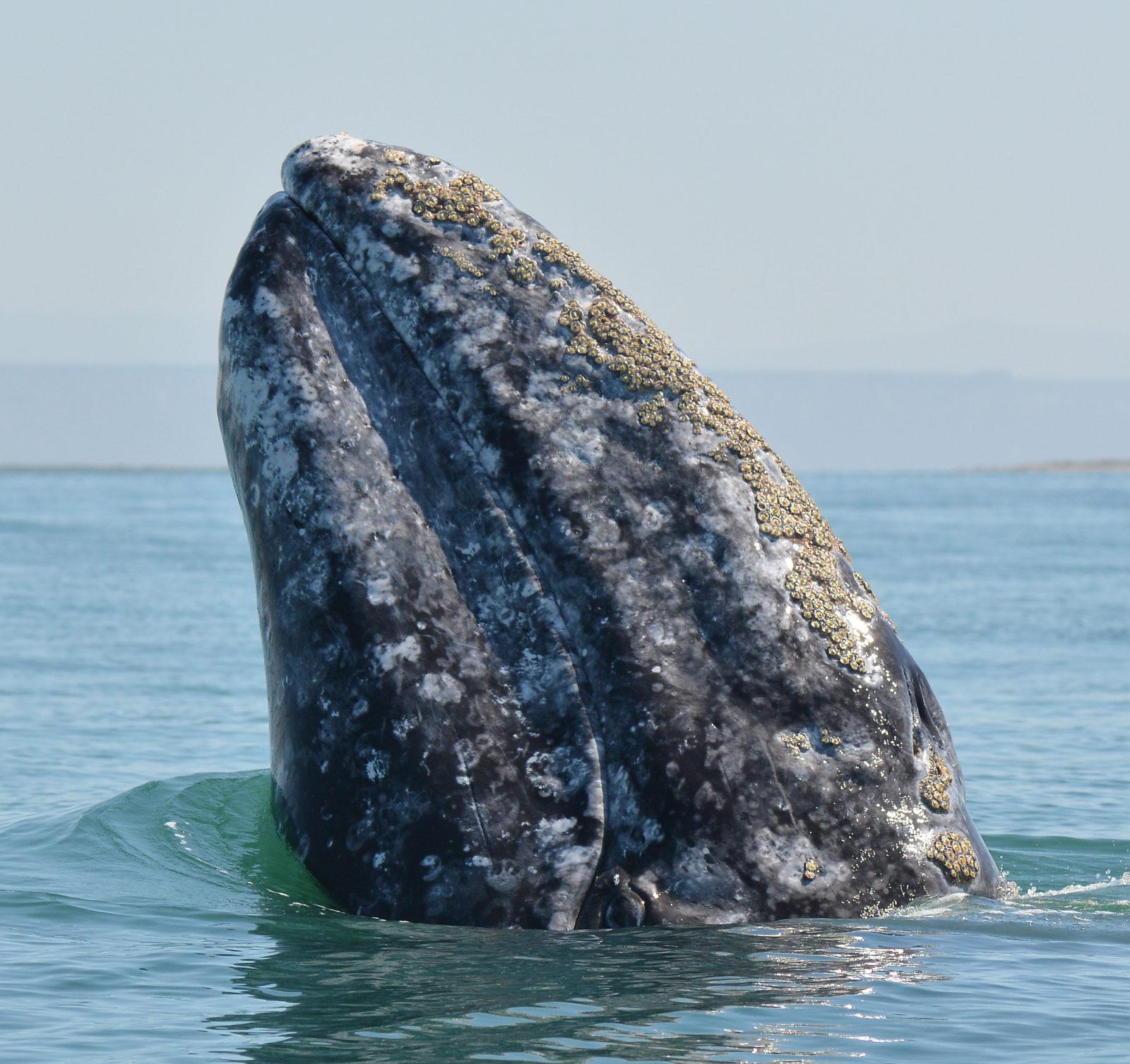Rob-servations #1: Recognizing Baja’s whales
by Rob Nawojchik
Eco-tourists are attracted to Baja California for many reasons. For whalewatchers, the attraction is the great abundance and diversity of marine mammals. “Abundance,” in simple terms, refers to the number of individuals. Some species of marine mammals occur in huge numbers in Baja. For example, it’s not uncommon to see herds of dolphins numbering in the hundreds or even thousands. “Diversity” refers to the number of species. The waters around the Baja peninsula contain one of the most diverse assemblages of “cetaceans” (whales and dolphins) in the world. Not only do we see lots of individuals (i.e., abundance), but many species (i.e., diversity).
Because of the great diversity in Baja, identification of cetacean species can be challenging. One of the advantages of our 12-day trips is that each participant gets daily repeat training in cetacean identification. Regardless of whether you’ve never seen a whale before, or are an experienced whalewatcher, your identification skills will improve dramatically with each day.
Cetacean identification can be difficult at times because whales and dolphins spend most of their time underwater and are at the surface usually for just a moment. Also, some of the initial sightings are of animals quite a distance away, sometimes miles away! Imagine trying to identify an animal two miles away that surfaced for a second.
When first learning whale identification, guide books and boat naturalists will refer to “field characteristics” and other identifying features. As you start to see more and more whales, you will learn to focus on these traits. With practice, you will glean much information from a surfacing whale in those few seconds, often enough to suggest an identification.
The captain and crew of the Searcher have spent literally years of their lives at sea, and have seen many more cetaceans than most marine mammal scientists. Their identification skills have developed into what I call the “gestalt phase”–they can see a dot on the horizon and know intuitively the species identification. This ability stems from seeing so many animals, over so many years, under so many conditions, that the crew have developed a subconscious sense of knowing what they’re looking at.
In upcoming blogs, we’ll examine field characteristics of Baja cetaceans to help you better identify these species.


























